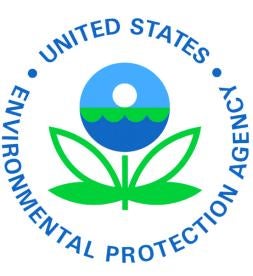On February 25, 2016, EPA released a pre-publication version of its much anticipated amendments to the agency’s Risk Management Program (RMP) regulations. The proposal, which follows EPA’s 2014 Request for Information, would impose significant changes to existing prevention program, emergency response preparedness, and information availability requirements, without furthering the program’s goal of accident prevention and release detection.
Proposed Changes to Incident Investigation Requirements Would Significantly Increase the Number and Type of Incidents that Require Investigation With No Corresponding Benefit to Preventing and Detecting Accidental Releases
Although EPA describes the changes as a “clarification” of existing requirements, the revised definition of “catastrophic release” and associated changes to the incident investigation requirements would greatly increase the number of incidents requiring formal investigation. The current rule’s limitation to incidents with offsite impacts would be expanded to cover incidents with only onsite impacts, and the type of incidents that require a formal investigation would be expanded far beyond the current rule’s focus on incidents that present imminent and substantial endangerment.
In addition, because the current rule requires incidents that could reasonably have resulted in catastrophic releases to be investigated in the same manner as incidents that actually resulted in such releases, the expanded definition has the potential to cause an exponential increase in the number of formal investigations required under the program. Finally, the proposed rule’s reference to such incidents using the undefined term “near miss” could create significant further confusion regarding when a formal investigation is required, exposing owners/operators to increased enforcement risk.
New Definition of “Root Cause” Would Mandate Identification and Correction of Management System Failures Even Where No Such Failures Exist
Under the current rule, facility owners/operators are required to discuss factors that contributed to incidents in investigation reports. The proposed amendments would replace this requirement with a requirement to determine the “root cause” of the incident. Although many facilities already utilize some form of root cause analysis as part of their general approach to incident investigation, the proposal would define “root cause” in such a way that human error could never be the underlying cause of an incident. More importantly, the rule would dictate and prejudge the outcome of the investigation by mandating that the cause be a management system failure, and then require that system failure to be corrected. Because every incident does not stem from a correctable failure in a facility’s management system, the proposed rule would threaten management system integrity by requiring unnecessary and counterproductive changes in response to each and every incident.
The Proposal Would Allow Regulators to Require Third Party Audits in Response to Any RMP Violation
Under the proposal, any noncompliance with the RMP rules would allow a regulator to require that a facility’s next compliance audit be conducted by a third party pursuant to a series of new requirements. This would include an alleged violation of the RMP’s general duty clause, a broad and vague mandate to operate a safe facility that EPA often uses as leverage when conducting routine RMP inspections. Although the preamble to the proposal highlights the “limited” instances where the third party audit requirement would be triggered, EPA would have wide latitude to require any facility to conduct a third party audit simply by conducting an inspection.
Requirement to Broadly Disclose Audit Findings Would Fundamentally Undermine the Audit Process
The proposal would require final and draft audit reports to be provided to EPA and local emergency planners. In addition, the proposal would require facilities to submit a response to each finding and a schedule for “promptly” addressing each finding. EPA makes clear in the preamble that the audit reports and findings responses would become public once submitted. Requiring public disclosure of audit findings minimizes the freedom and candor that is so essential to the audit process. Where such reports will be made public, public relations and legal exposure considerations are heightened. In addition, consideration would need to be given to making the reports understandable to a lay audience. All of these factors necessarily affect the process in a way that does not benefit the prevention and detection of accidental releases.
Rigid Third Party Auditor Qualifications Would Exclude All But the Least Experienced Auditors
The proposed rule sets forth rigid qualifications for third party auditors that would essentially exclude the vast majority of experienced auditors. Specifically, auditors must not only have knowledge of the RMP program and required certifications and training, but the lead auditor must be a licensed professional engineer. In addition, the auditors must not only have experience with the source-type being audited, but with the specific process units involved. Finally, no member of the audit team can have conducted consulting services for the owner/operator in the past three years, and they cannot provide such services for an additional three years following the audit. In fact, the requirements are so difficult to meet, that EPA has proposed to build in a process whereby facilities can petition the agency to waive certain requirements, anticipating on the front end that the requirements are too difficult to meet.
Safer Technology and Alternatives Analysis Would Require Facilities to Prepare Burdensome Justifications for Technology and Design Choices with No Significant Benefit to Preventing and Detecting Accidental Releases
The rule would require facilities in certain industry sectors – chemical manufacturing, coal and petroleum products manufacturing, and paper manufacturing – to evaluate the “feasibility” of safer technologies and alternatives when conducting process hazard assessments. Areas to be evaluated include inherently safer technologies and designs, passive and active measures, and procedural measures. EPA rejected including the same requirement in a 1996 rulemaking because the agency did not believe it would yield significant benefits. EPA now claims, with no support, that such measures and technologies are “becoming more widely available and being adopted by some companies.” More importantly, no generally accepted methodology exists for making such assessments, which necessarily involve complex decisions requiring scientific and engineering expertise across a daunting range of areas. As a result, mandating such an assessment would be unworkable, creating a significant paperwork burden while focusing attention away from real hazard analysis.
Local Coordination Requirements Would Overwhelm Some Local Responders, Exposing Facilities to Enforcement
The proposal imposes significant burdens on facility owners/operators to orchestrate coordinated drills and exercises with local emergency responders and to document such coordination, including conclusions reached through the process. In areas where multiple facilities are located, local responders may not be available and/or may not have the financial resources to participate in these activities at the frequency and on the timetable required under the proposed rule. As a result, facilities would risk noncompliance for issues that are entirely outside of their control.
Public Disclosure Requirements Would Impose Unnecessary Burdens and Mandate Public Release of Sensitive Security Information
Finally, the proposed rule includes new requirements to make information available to local responders and the public. While some of the information is already publicly available, calling into question the need for the requirement in the first place, other information required to be disclosed under the rule would have no benefit. For example, the rule would require a summary of safer technology and alternatives analyses to be provided to local responders. Still other information would pose security risks, including a requirement to make summaries of facility-specific emergency response programs and exercises available to the general public.
Recent incidents, including the 2013 fire and explosion at the West Fertilizer facility in West, Texas are not indicative of a problem with the existing program, but rather, with implementation and compliance. Accordingly, EPA’s resources should be focused on ensuring compliance with the current rules, and not on mandating inflexible and burdensome requirements that are unlikely to result in any benefit to preventing and detecting accidental releases, and may actually have the unintended consequence of negatively impacting emergency response preparedness and prevention.



 i
i


